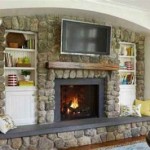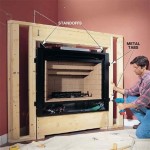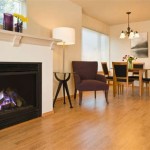Fireplace Hearth Stone Slab: A Foundation of Style and Durability
A fireplace hearth is more than just a functional space in front of a fireplace; it's a focal point that can dramatically impact the overall aesthetic of a room. The hearth stone slab, the foundation of this space, plays a crucial role in both its practicality and its visual appeal. Selecting the right hearth stone slab involves considering several factors, from material and style to size and installation. This article explores the essential aspects of fireplace hearth stone slabs, providing insights into materials, design considerations, practical applications, and maintenance tips.
Choosing the Right Material: Durability and Aesthetics
The material of the hearth stone slab dictates its durability, appearance, and maintenance requirements. Popular choices include:
- Natural Stone: Granite, marble, limestone, and slate are classic options known for their natural beauty, resistance to heat, and longevity. Each stone offers unique patterns and textures, allowing for personalization.
- Engineered Stone: Quartz and porcelain are durable and stain-resistant alternatives that mimic the look of natural stone but often come with more affordable price points.
- Ceramic Tile: Ceramic tiles are diverse and cost-effective, offering various colors, patterns, and sizes. They are suitable for indoor fireplaces and can be easily replaced if damaged.
The choice of material depends on the desired aesthetic, budget, and the style of the fireplace and surrounding décor. For instance, a traditional fireplace may benefit from the elegance of marble, while a contemporary fireplace might embrace the sleekness of engineered quartz.
Design Considerations: Size, Shape, and Style
The design of the hearth stone slab significantly influences its appearance and functionality. Fundamental considerations include:
- Size: The hearth should be large enough to accommodate the fireplace opening, provide a comfortable seating area, and offer ample space for fire tools or decorative elements.
- Shape: Traditional hearths are often rectangular, while contemporary designs embrace more unconventional shapes like curved or rounded.
- Style: The overall style of the hearth should complement the fireplace and the surrounding décor. A rustic fireplace might call for a rough-hewn stone slab, while a modern fireplace may benefit from a sleek, polished slab.
Professional designers often prioritize creating a flow between the hearth, fireplace, and surrounding furniture, ensuring the hearth seamlessly integrates into the room's overall design.
Practical Applications: Functionality and Safety
Fireplace hearth stone slabs serve practical functions beyond aesthetics. They provide a safe and stable surface for the fireplace, protecting the floor from sparks, embers, and heat damage. Additionally, hearth stone slabs are:
- Heat-Resistant: Their durable materials withstand high temperatures generated by the fireplace, ensuring long-lasting safety and functionality.
- Slip-Resistant: Some materials, like slate, offer a textured surface, minimizing slipping hazards when walking near the fireplace.
- Easy to Clean: Most hearth stone slabs are easily cleaned with a damp cloth or a mild cleaning solution, making maintenance a straightforward process.
By carefully considering these practical aspects, homeowners can ensure their fireplace hearth stone slab offers both safety and functionality, enhancing the fireplace experience.

Stone Slabs Elite Blue Granite Natural Brick Depot

The Stone Center Fireplace Hearths Mantles

Slabs Hearths Terrazzo Stone Supply A Siteone Company

Slabs Hearths Terrazzo Stone Supply A Siteone Company

Slabs Hearths Terrazzo Stone Supply A Siteone Company

M Rock 24 In X Gray Concrete Hearth Cap Stone Mr24x24g The Home Depot

Stone Slabs Elite Blue Granite Natural Brick Depot

Stone Slabs Elite Blue Granite Natural Brick Depot

Hearth Stone 16 X 20 M Rock Solutions

The Stone Center Fireplace Hearths Mantles








